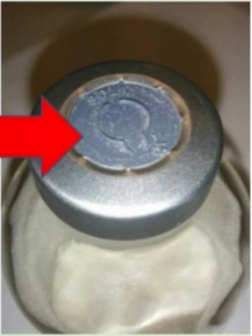Containment Requirements for Hazardous Drugs Requiring Manipulation
- Steve Milstead, PharmD, BCSCP
- Jun 16, 2022
- 3 min read
Updated: Sep 24, 2022
USP <800> sets minimum standards for handling of hazardous drugs. As we focus on manipulation of hazardous drugs (HDs) we must remember that HDs are more inclusive than just chemotherapeutic drugs. Use of the NIOSH list, although not all inclusive, is very helpful and gives important information concerning the HD status of a drug.
The current NIOSH list (2016) breaks down HDs into 3 categories (tables):
Table 1: Antineoplastic drugs
Table 2: Drugs that exhibit one or more other hazards
Carcinogenicity
Teratogenicity
Genotoxicity
Organ toxicity at low doses
Table 3: Reproductive hazard
Note: We are specifically talking about the categorization of the current NIOSH list (2016). Just as other publications, NIOSH has been delayed however a draft from 2020 was released, noting some very important changes to the future categorization of HDs. Additionally, it is important to understand that each publication of NIOSH only examines drugs on the market, up to a certain date that is prior to the publication date. Therefore, this list is not all inclusive and newer drugs must be individually assessed for hazardous properties by the facility (to be addressed in a future blog post). Biologics will also no longer be included on future NIOSH lists and will need independent assessment.
What drugs, requiring manipulation, must adhere to USP <800> containment requirements:
USP <800> can be extremely confusing when it comes to which HDs, requiring manipulation, MUST adhere to the chapter. It can easily be interpreted that ALL intravenous (IV) HDs, no matter of placement on NIOSH tables, must be compounded in a C-PEC/BSC because they require manipulation. However, this isn't the intent of the chapter. All APIs and antineoplastics on table 1 of the NIOSH list requiring manipulation MUST follow all containment requirements in USP <800>. All other HDs must also follow these same requirements UNLESS there is an assessment of risk in place (refer to blog on Assessment of Risk – pending publication).
Examples of HDs requiring manipulation:
Cisplatin (table 1) MUST be compounded in C-PEC/BSC and C-SEC (assessment of risk cannot be used since this in an antineoplastic from table one and is requiring manipulation)
Valproate Na (table 3) does NOT have to adhere if an assessment of risk is involved (since it is not an API, antineoplastic - from table 1 of NIOSH -- NIOSH will be changing and splitting antineoplastic drugs into 2 tables)
Ganciclovir (table 2) MUST comply 100% with the chapter even though it is NOT an API, antineoplastic because there are special handling requirements per the Manufacturer PI stating to handle as if it were an antineoplastic (assessment cannot be used if the manufacturer has outlined special handling requirements)
The facility may opt not to apply an assessment of risk to HDs but then all HDs would need to follow containment requirements placing hardship on the compounder and those administering. Per USP, if any drug is manipulated in a BSC, used for compounding HDs, then all final products must be treated (labeled, handled, administered) as if contaminated thereafter. There would be serious implications for workflow of compounders and first-line staff if all HDs needing manipulation were required to be compounded in a BSC.
This allowance in USP <800> is put into place to reduce unnecessary precautions that would interfere with patient treatment. However, this is a power not to be abused. To keep employees safe, all hazardous drugs must undergo a thorough assessment of risk to prove safety in all aspects of handling, from receiving to wasting of the drug.
As reference, the following clip is from the USP <800> FAQ. Note that the FAQ section is NOT interpretive over regulatory enforcements but rather a way that USP can assist in explaining intent of sections where more explanation may be needed.

Note: This blog post is about HDs “requiring” manipulation. APIs and antineoplastic drugs on table 1 of the NIOSH list may not be released from the containment requirements of USP <800>, therefore and assessment of risk is NOT needed. However, ALL other HDs must undergo and have on file an assessment of risk if it is to be released from the containment requirements of the chapter.
Example: A tablet must be stored in negative pressure unless there is an assessment of risk to show why the drug may safely be stored outside on the containment requirements.



Comments